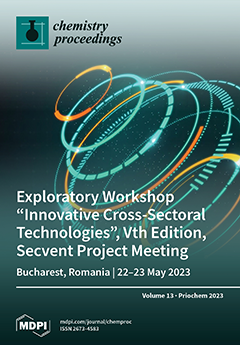Chem. Proc., 2023, Priochem 2023
Exploratory Workshop "Innovative Cross-Sectoral Technologies", Vth Edition, Secvent project meeting
Bucharest, Romania | 22–23 May 2023
Volume Editors:
Mihaela Doni, National Institute for Research & Development in Chemistry and Petrochemistry—ICECHIM, Romania
Florin Oancea, National Institute for Research & Development in Chemistry and Petrochemistry—ICECHIM, Romania
Radu Claudiu Fierăscu, National Institute for Research & Development in Chemistry and Petrochemistry—ICECHIM, Romania
- Issues are regarded as officially published after their release is announced to the table of contents alert mailing list.
- You may sign up for e-mail alerts to receive table of contents of newly released issues.
- PDF is the official format for papers published in both, html and pdf forms. To view the papers in pdf format, click on the "PDF Full-text" link, and use the free Adobe Reader to open them.



